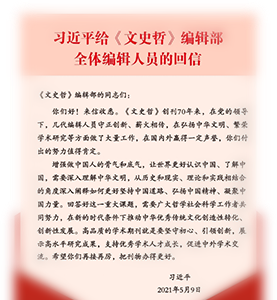东亚简牍文化的传播——以韩国出土“椋”字木简为中心的探讨 戴卫红
20世纪90年代到21世纪初,在韩国境内相继出土了新罗、百济时期记有“椋”字的木简。从木简内容看,“椋”是与粮食、物品储存有关的仓库系统,有仲椋、下椋之分。“椋”是有瓦的地上建筑,有专门的“椋司”来管理。“椋”在中国现存的传世文献中,未见有仓库之义,而它从木,京声,从词源、词义上与表仓廩之意的“京”同源;从建筑形制看,“京”底部当有立柱或高台,为地面建筑物,这与椋的建筑形制相合。在4世纪末逃亡到朝鲜半岛的中原汉人的壁画墓中,出现了储存食物的“京屋”;在5世纪初的高句丽壁画墓中出现了表仓库之意的“椋”。“椋”这样的涵义及建筑形制经由百济流传至日本列岛。传世文献和简牍材料均反映出古代朝鲜半岛的仓库制度与中国的仓库有着千丝万缕的联系,这与汉四郡以来中国简牍文化向朝鲜半岛辐射,百济和孙吴、南朝各代政权的友好交流密切相关。韩国木简在东亚简牍文化的传播中,起着连接中国、日本的重要中介作用。
The Culture Spread of Bamboo and Wooden Slips in East Asia:
A Discussion Centered on the Wooden Slips with the Character “Liang” Excavated in Korea Dai Weihong
From the 1990s to the early 21st century, wooden slips were excavated in South Korea with the character “liang” (椋) belonging to the periods of Silla and Paekche. Judging from the content, liang was a kind of above-ground structure built with tiles and a kind of warehouse storing food or goods being administered by specialized officers. In China’s extant literature, liang does not have the meaning of warehouse, but it is cognate with the character “jing” (京) with the meaning of granary. On architectural form, jing is an above-ground structure with a pedestal on the bottom, which is consistent with liang. From the end of 4th century to the early 5th century, such an edifice emerged in the tomb murals on Korean Peninsula and Koguryo. Later, this literal meaning and architectural form came to Japan from Paekche. Extant literature as well as bamboo and wooden slips all reflect that the warehouse system in ancient Korean Peninsula had innumerable links with China’s warehouse, which was closely related to culture of bamboo and wooden slips radiating from China to Korea since the Han Court set four prefectures on the Korean Peninsula, and established friendly exchanges between Paekche and the Kingdom of Wu as well as the Southern Dynasties. In the spread of bamboo and wooden slips, the Korean wooden slips acted as an important intermediary between China and Japan.


